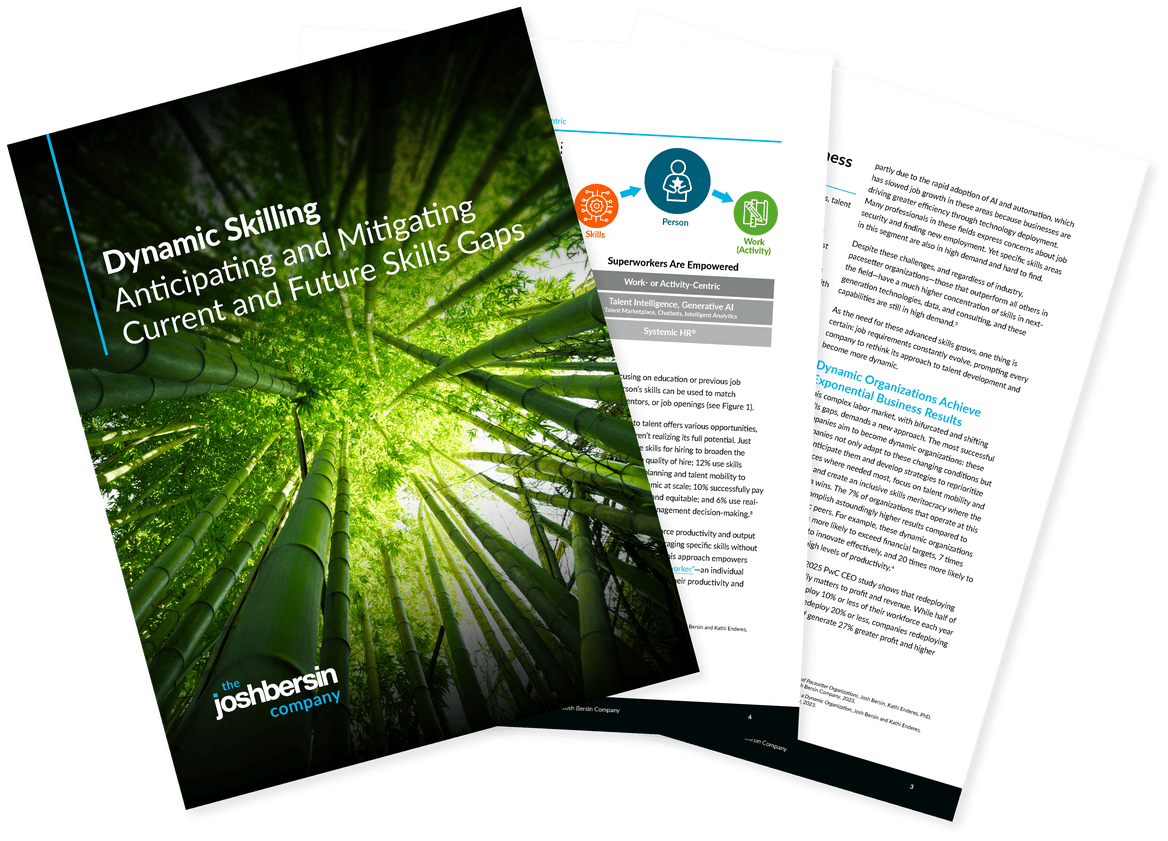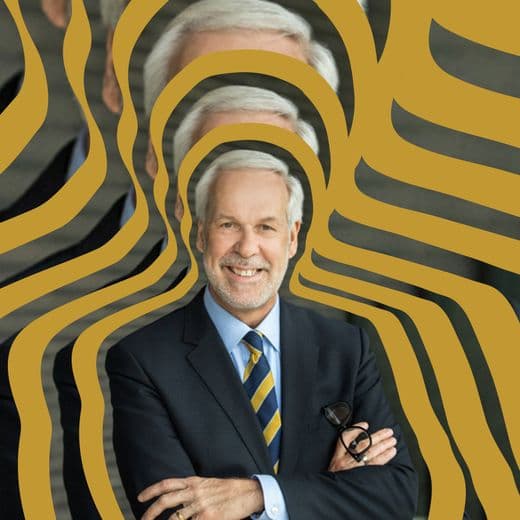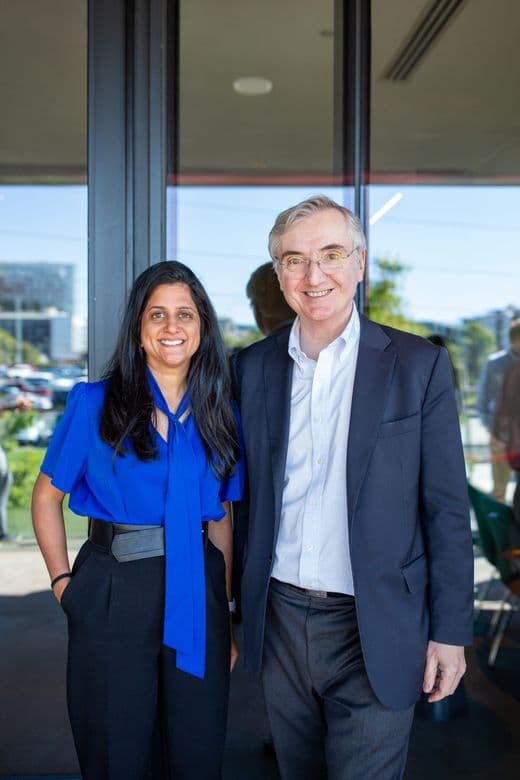Beth Knight |
For HR leaders, workforce transformation is a defining challenge for 2025 and beyond. Their primary task: Build a workforce with future-proof skills.
This is not merely a matter of upskilling for AI and automation. By 2030, 70% of the skills used in most jobs will evolve, according to LinkedIn research. Yet, skill gaps remain the top barrier to growth and transformation, with 63% of employers citing them as a top challenge in the World Economic Forum’s Future of Jobs Report.
In this era of profound uncertainty, the path for HR seems murky. How do you plan for the unplannable? How do you build the skills your workforce needs when you’re not even sure of the impact of the technological revolution and what skills will be needed to stay competitive?
The answer lies not in guesswork but in strategy rooted in both humility and agility. Success will require a combination of dynamic skills audits, strategic foresight, and a responsive approach to workforce planning built on an effective upskilling infrastructure. Organizations that invest in adaptability today will be better positioned to lead tomorrow.
Start with a comprehensive skills audit.
The first step in building a future-ready workforce is understanding the current one. Conducting a comprehensive skills audit allows organizations to assess workforce strengths, identify gaps, and determine where investment is needed most. When business and HR data work together, companies get a sharper, data-driven view of their capabilities.
This matters because many companies don’t actually face a skills gap as we’ve come to define the term. They face a mismatch. LinkedIn's Work Change Report has found that job applications are surging, yet 64% of HR professionals struggle to find qualified talent. To bridge this disconnect, HR leaders must reevaluate their workforces to align existing talent with upskilling opportunities that can prepare for resilient, future-ready roles.
Many companies don’t actually face a skills gap as we’ve come to define the term. They face a mismatch.
To be sure, a skills audit isn’t one-size-fits-all. Priorities shift based on industry and business needs. Healthcare must balance immediate staffing shortages with long-term plans for digital health and patient care advancements. Tech companies expanding AI capabilities focus on forecasting future skills and reskilling employees into emerging roles. Manufacturing leaders solve for talent shortages today while integrating robotics and automation for tomorrow. Retail continues to tackle retention while upskilling managers and embedding AI into operations, merchandising, and customer service.
Any well-executed skills audit should answer three fundamental questions:
Where are we now?
Where do we need to go?
What will it take to get there?
Aligning this assessment with business strategy ensures organizations aren’t just filling gaps — they’re future-proofing their workforce.
Leverage AI and people analytics to predict trends and guide planning.
Once the foundational knowledge is established, organizations can leverage AI and advanced technologies to predict trends and guide workforce planning. This technology enables HR leaders to model potential scenarios, forecast future demands, and identify emerging skills.
For example, AI can analyze vast datasets to uncover patterns in industry shifts or predict which roles are likely to be impacted by automation, which roles could be augmented with new skills, and how. These insights can empower organizations to act proactively rather than reactively, identifying new talent pools and deploying skilling programs that build pathways to new, resilient roles.
Build an agile upskilling infrastructure.
Underpinning the skills audit and strategic forecasting with AI is an investment in learning and development. According to LinkedIn research, 70% of HR professionals say their organization is prioritizing upskilling in 2025 to help build skills from within.
The most successful programs will be adaptable, flexible, and designed to serve the needs of the entire organization, from frontline workers and managers to corporate employees, technical roles, and everywhere in between. That requires a variety of learning formats — including stackable microcredentials, bachelor’s and master’s degrees, cohorted and custom learning, and beyond — as well as the ability to pivot and expand programs quickly as new needs arise. An effective program also takes a dynamic approach to both technical training and human-centric skills such as creative thinking, communication, and lifelong learning — both critical for a future-ready workforce.
This agile structure creates a virtuous cycle in which future-ready programs drive employee engagement, engagement fuels data for smarter forecasting, and those insights continuously refine L&D investments for maximum impact.
Partner with innovative learning providers.
Employers aren’t the only ones looking to adapt to an uncertain future. Educational institutions are also reimagining their role in a changing world, and many are eager to collaborate with employers to ensure their programs meet the demands of an evolving workforce. For forward-thinking companies, partnering with innovative learning providers offers a unique opportunity to align skilling strategies with cutting-edge education.
The most effective providers have a track record of serving working adult learners, rapidly bringing relevant courses to market, and tailoring programs to meet industry needs. Beyond responding to employer insights, they act as a watchtower — helping companies anticipate demands and avoid an insular approach to skilling.
By tapping into these collaborations, employers gain access to expertise, agility, and scalable solutions that support both immediate skilling needs and long-term workforce planning.
Building resilience in an unpredictable world
Preparing for the future requires HR leaders to be humble and clear-eyed about their organization’s current state and bold in driving innovation — staying agile, forward-thinking, and never complacent.
By starting with skills audits, leveraging AI, building agile upskilling infrastructures, and forming strategic partnerships, organizations can position themselves to thrive amid change. The future may be uncertain, but by embracing these strategies, HR leaders can create a workforce ready to navigate whatever comes next.




